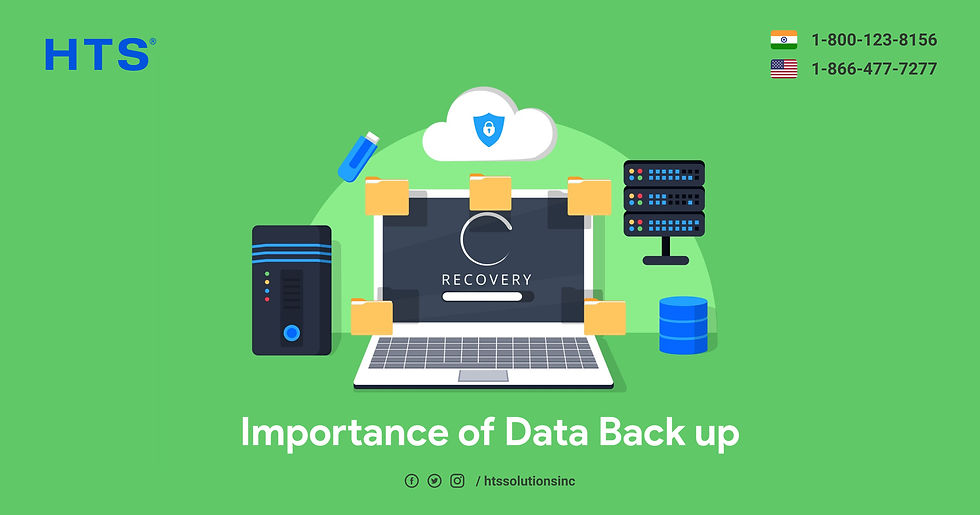Importance of Data Backup
- HTS Hosting

- Feb 15, 2021
- 3 min read
Data Loss
The danger of data loss is ubiquitous in the modern business world where digitization is the name of the game. Regardless of the size of the business or the industry that it belongs to, any vulnerability on the part of an organization can lead to data loss for it, which can eventually lead to spending extra time, money, efforts and resources in either recovering that data or recreating it. Hence, data loss is a matter of serious concern for every enterprise.

The probability of data loss can be reduced substantially when the primary reasons that cause it are known. Data loss happens majorly due to situations that involve damage caused to hard drive, hard drive formatting, software corruption, viruses and malware, hackers, natural disasters, theft, power outages and human errors.
To digress, in the context of data, the data of websites are stored on the servers of web hosting companies. These servers store, process as well as deliver web resources. Web hosting companies also provide the necessary services and technologies that are needed to keep sites up and running. Web hosting is of many types and the best service providers in this field are referred to as the “Best Website Hosting Company” or as the “Best Linux Hosting Company” or as the “Top Cloud Hosting Company”.
Data Backup
Data backup is a proactive approach towards the safety of data. It provides one of the most effective and easiest ways to prevent data loss. This kind of backup involves maintaining and storing the most updated version of one’s data elsewhere, so that at least one additional copy exists of such data that will help to restore original data in the event of data loss.
Backups help to recover data that got deleted or corrupted and even help in recovering data that is from the past, such as copies of older files. Essentially, backups are a form of disaster recovery. For data backup to be effective, it must be carried out regularly, the process should be automated as well as the backup copies should be saved on different mediums.
Any work or data that can’t be replaced easily and is crucial for the business needs to be backed up. These can be spreadsheets, databases (for financial data), word processing documents, customers’ data etc. There is no need to back up programs or system folders.
Data Backup Plan
A data backup plan must take into account which data needs to have a backup, the compression methods that are to be used, the frequency as well as the types of backups that are to be run, the kind of media that is to be used for storing backups and the storage facility for storing the backup data safely.
A data backup strategy must have the following-
Onsite Backups- These are always faster to restore than offsite tape backups.
Offsite Backups- In the unfortunate event that some harm is caused to the data center, the backups that exist there, can also get damaged. That is why it is wiser to maintain copies of backups offsite that could be accessed manually or through the cloud.
Optimized Backup Schedule- Any data backup process needs to be regular as well as consistent and should be structured as per a clear and organized schedule.
Backup Testing- Backups need to be tested regularly. Moreover, the IT staff should be trained thoroughly and need to be well versed in accessing and restoring data backups swiftly.
Organized Storage System- With regard to tape-based backup solutions, the storage repository for backups needs to be clear and organized.
The popular 3-2-1 backup strategy states that at least 3 copies should be kept of any data.
The data backup should be on 2 different storage types and at least 1 copy of the data should be offsite.
Conclusion
Data loss disrupts the functioning of any business, impacts adversely its productivity and results in not only loss of data but also loss of valuable time, money, resources, business and often customers as well as reputability of the organization. A stitch in time saves nine. This popular proverb rings true with regard to the importance of data backup.

Comments